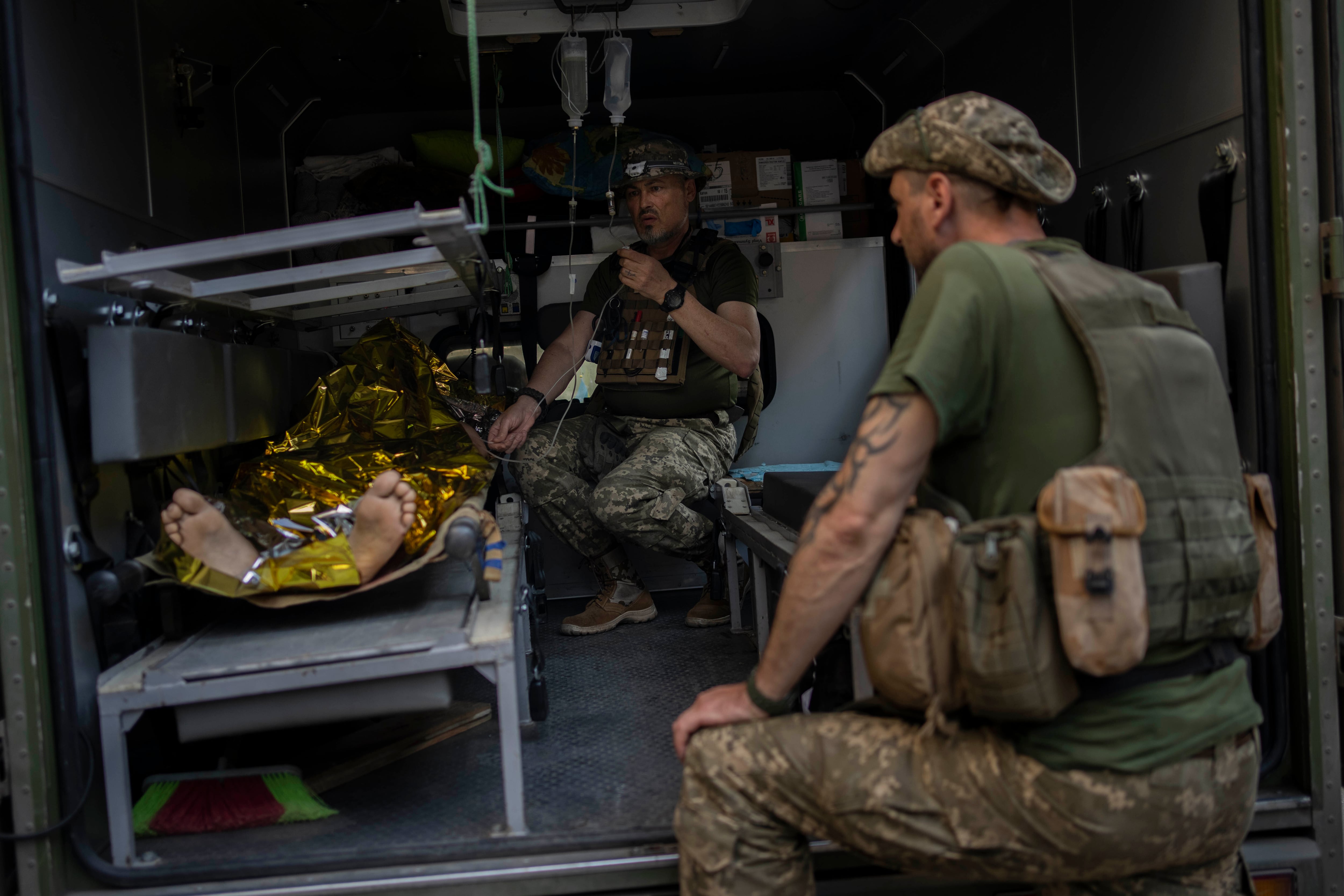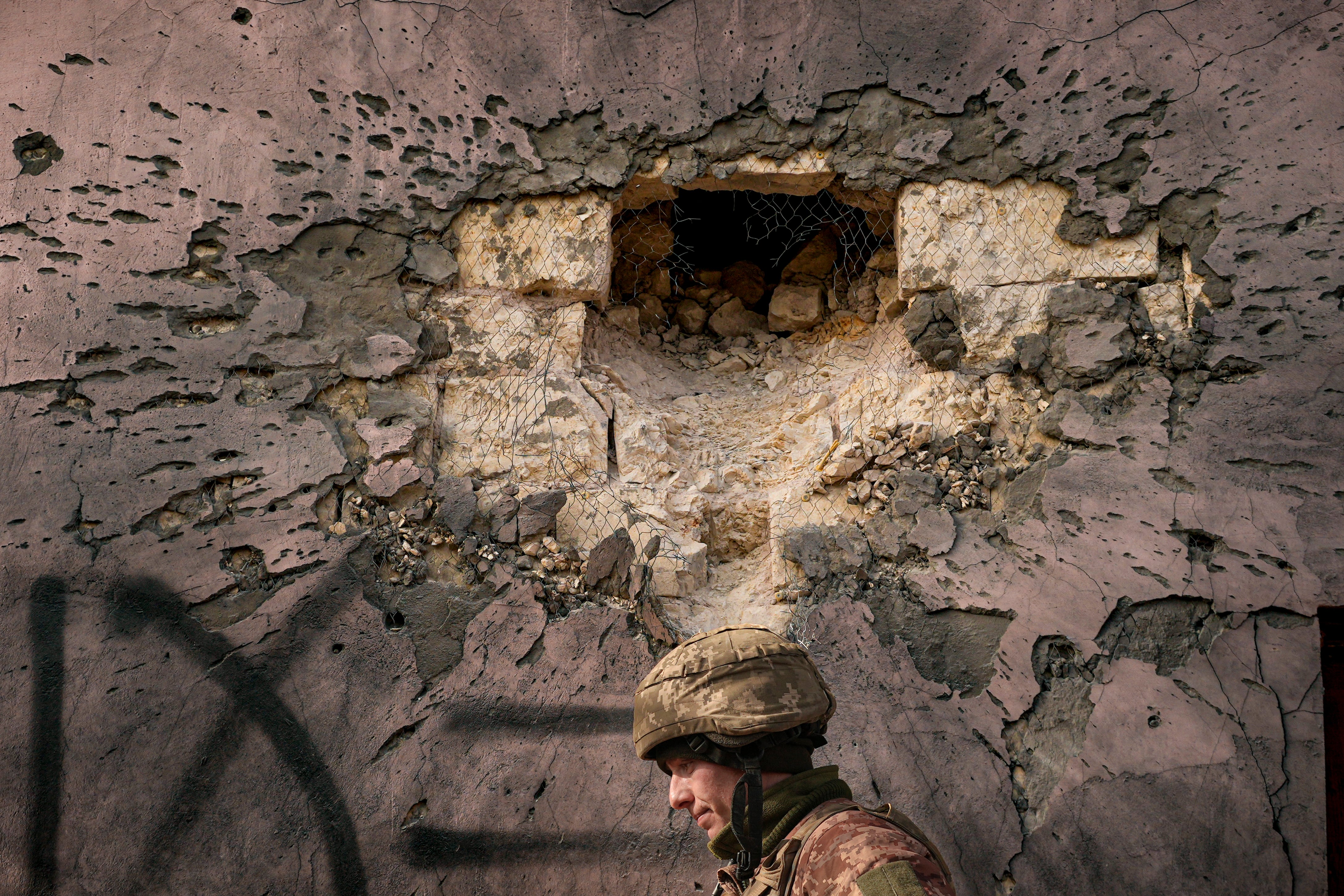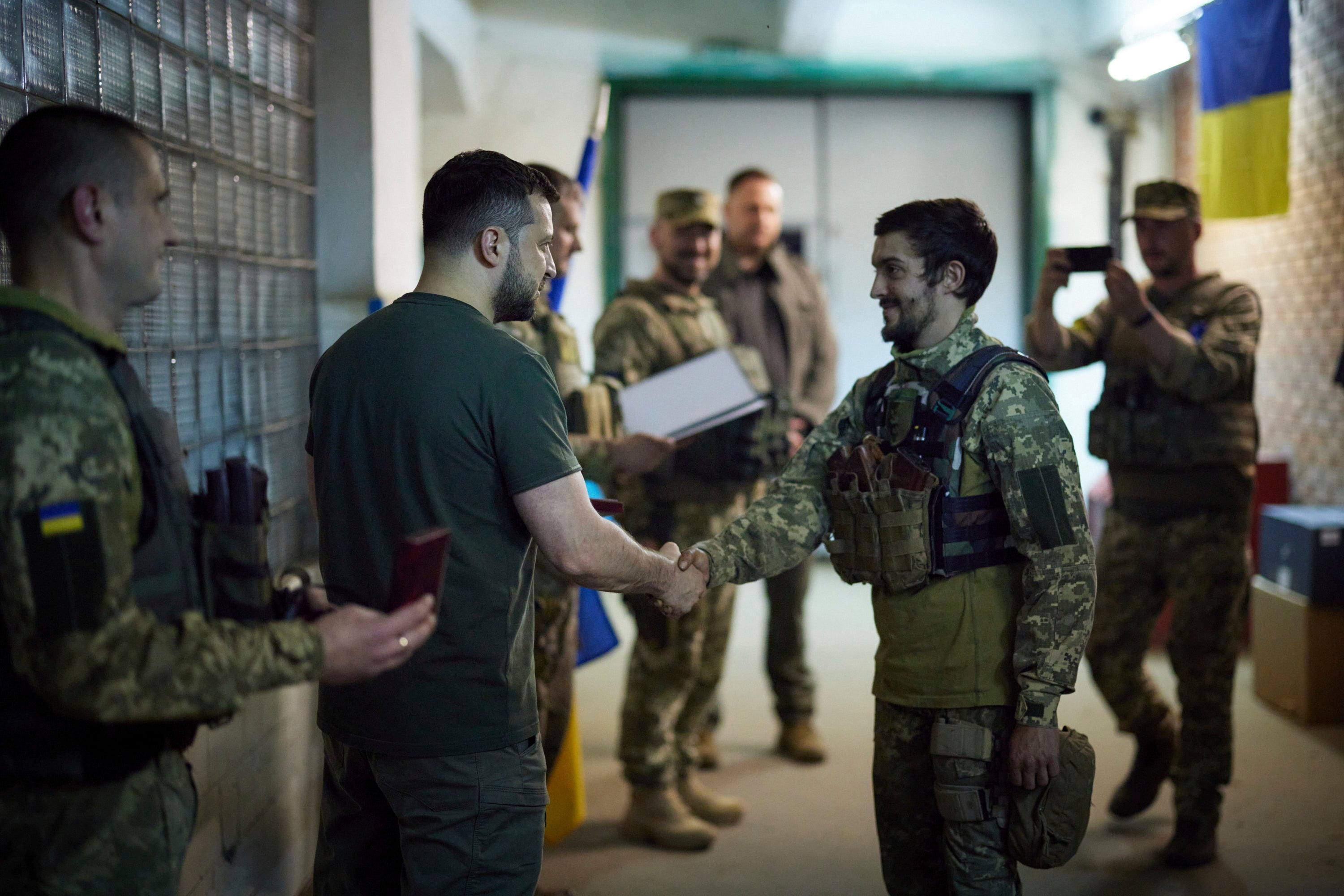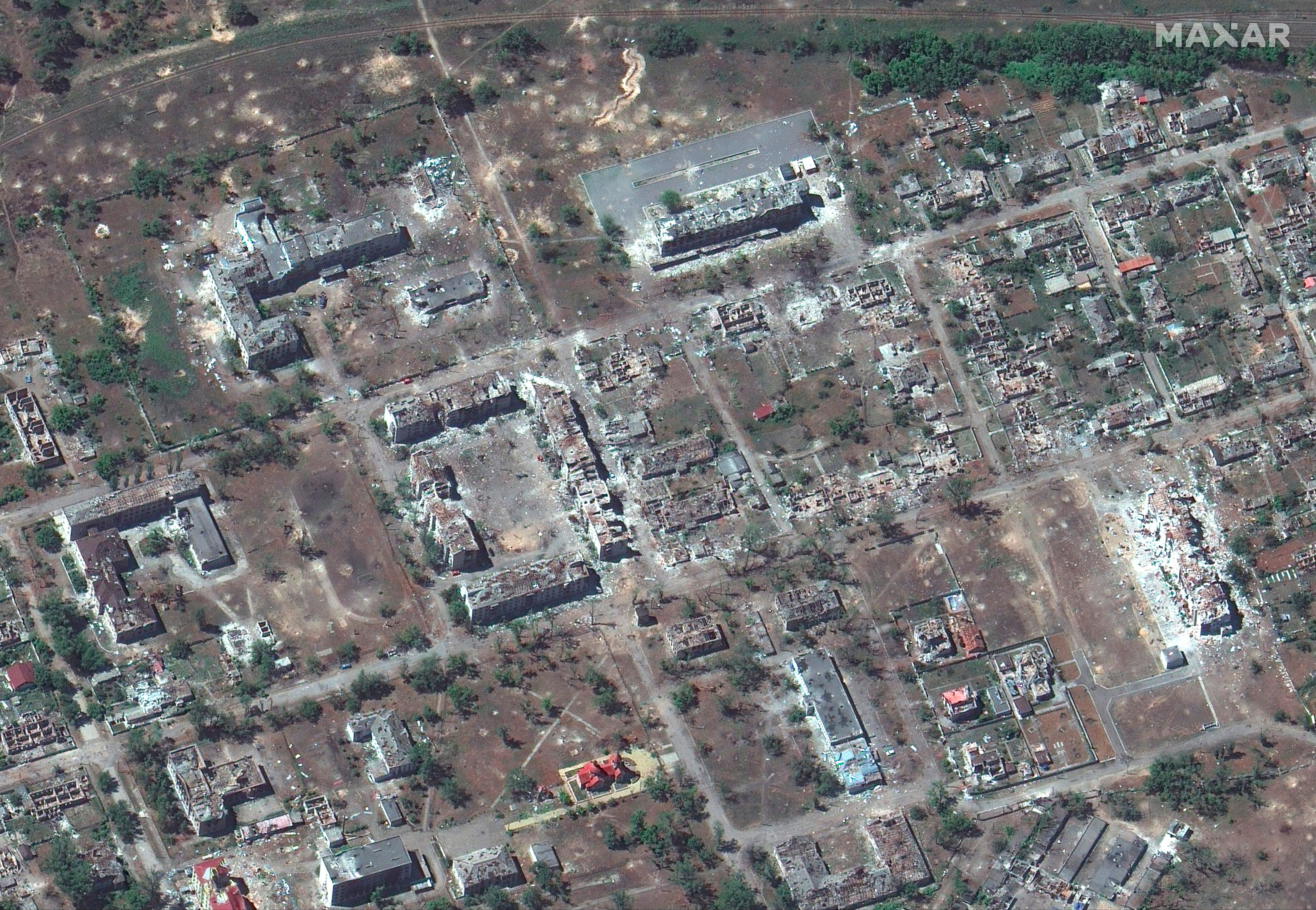KRAMATORSK, Ukraine — The fight for Ukraine’s Luhansk and Donetsk Oblasts hangs on a knife-edge — and the outcome may decide the future of the Donbas for years to come.
Driven from Kyiv, the Ukrainian capital, pushed back behind the border around Kharkiv in the east, and fought to a standstill outside Ukraine’s Black Sea port city, Odesa, mauled Russian troops have regrouped around Donbas.
Units cobbled together from the surviving remainders of other theaters, backed up by some of Russia’s newest military hardware, are attempting to capture the entirety of Ukraine’s eastern Donetsk and Luhansk Oblasts — two coal and mineral-rich provinces that together form the Donbas region. If successful, Russia would control virtually all of Luhansk and Donetsk.
Ukrainian infantry officers on the ground offer frank and unfiltered accounts that paint a vivid picture of the situation. Taking cover in a ditch at the side of a road near Bakhmut in Donetsk and mere kilometers from the front line, Yuri, a gray-bearded Ukrainian officer, explained that it has been a “tough” fight closer to the front.
“The Russians hit us with cluster munitions, phosphorus,” Yuri explained, rubbing his chin in grim contemplation. Outgoing Ukrainian mortars boomed nearby from behind a thickly wooded area, and the crash of incoming Russian artillery exploded in a field opposite the road.
Militaries use white phosphorus to illuminate battlefields and create smoke screens, though deliberately using its toxic properties against people could breach the Chemical Weapons Convention. Ukraine has previously accused Russian forces of using the substance against civilians, but those accusations have been difficult to verify.
This war “is not like 2014; it’s like 1941. It’s a war of vehicles,” Yuri explained. He estimated an armored vehicle’s lifespan in the war at about two weeks.

In addition to indiscriminate and constant artillery barrages, Yuri’s men must contend with Russian helicopters, which they see “every day.” Yuri explained that “we do manage to shoot some of the helicopters down,” adding that he and his men have been at or near the front for forty days. “The Javelins are good, but we need more tanks.”
Ukrainian President Volodymyr Zelenskyy said Tuesday that his forces remain set on recapturing all occupied territories, even though it appears increasingly difficult to do so. At the moment, the Ukrainians are struggling to push Russia back at Severodonetsk and around Sloviansk. U.S. President Joe Biden and his senior officials have maintained that it’s up to Ukraine to decide when to stop fighting.
“It’s their territory. I’m not going to tell them what they should and shouldn’t do,” Biden said June 3. “But it appears to me that, at some point along the line, there’s going to have to be a negotiated settlement here. And what that entails, I don’t know.”
RELATED

In the meantime, Biden added, the U.S. will continue supplying weapons, but manpower is another hinge point for Ukrainian forces.
While Ukraine has broadcast carefully tabulated figures of Russian losses, Ukrainian officials have been extremely tight-lipped about their own casualties, part of the country’s informational campaign to control the wartime narrative. Recently, however, Zelenskyy alluded to his country’s losses, estimating casualties at 60-100 each day, in addition to 500 wounded daily. The toll is most significantly felt in Donbas.
During a visit to Lysychansk, the embattled Ukrainian city just behind the front line, a Ukrainian major — callsign Spartak, or Spartacus — lamented the shortage of tank and artillery ammunition in the east. Ukrainian troops, he said, are forced to conserve their ammunition due to lengthier supply lines. Their Russian adversaries, meanwhile, now benefit from relatively short supply lines.

The fighting at Lysychansk and Severodonetsk is a “meat grinder,” Spartak said, adding that he expects the two cities in the east will suffer “the same [fate] as Mariupol,” a city at the Black Sea flattened by heavy ordnance during the city’s siege by the Russians. The SUVs and transport vans many Ukrainian troops rely on in place of armored vehicles are rapidly destroyed in combat, Spartak explained, hampering transport logistics and medical evacuation.
Russian forces initially seized over half of Severodonetsk, though Ukrainian media reported a successful counterattack, the details of which remain murky. Russian-language media reports that Russia now controls virtually the entire city, but the situation remains fluid.
Despite the Donbas’ extreme danger, Zelenskyy made a trip to the region on Monday, going to Soledar and as far as Lysychansk to talk with Ukrainian troops and present awards to soldiers.
In a video Zelenskyy posted to his Telegram channel, the president alluded to new weaponry reaching the Donbas region, though he refused to delve into specifics. “We brought something to the military. I will not talk about it in detail.” But “we brought confidence,” the president said, “and strength.”
Though Ukraine has already taken delivery of some of the most advanced conventional artillery pieces in NATO arsenals, Kyiv has long pleaded for longer-range weaponry from the west — which they are poised to receive.
During a recent press briefing, a senior American military official explained that the U.S. Department of Defense will send four M142 High Mobility Artillery Rocket Systems, or HIMARS, a long-range rocket artillery system, to Ukraine.

“What the HIMARS will allow them to do is to get greater standoff. Right now, the howitzers we provided them have about a 30 km range,” said Colin H. Kahl, undersecretary of defense for policy. “The HIMARS have more than twice that, which will allow them — even with fewer systems — greater standoff.”
“These are precision guided systems with extended range,” Kahl said. “For high value targets, that, that allows them to keep some of the pressure off of Ukrainian forces on the front, [which] we think these systems will be very useful.”
Britain is to join the United States and send M270 multiple launch rocket systems to Ukraine, a tracked vehicle similar to the United States’ wheeled HIMARS that can fire the same long-range ammunition the HIMARS uses.
The shortage of heavy, mobile weaponry is acutely felt in Donbas.
Alexei and Nikita, a pair of soldiers on leave in Bakhmut, a small city in Donetsk, complained of the lack of heavy weaponry with which to strike back against Russian vehicles. They explained that the war today is “drastically different” than what they experienced in 2014.
“Now it’s mostly artillery. That’s it. The ordinary firearm, the ordinary infantry — they are not needed,” one soldier said. The Ukrainians on the front are “bombed by planes, helicopters, tanks, mortars, Grads… a machine gun against a Grad or a tank, or a BTR — it’s…” the soldier trailed off despondently.
Until Ukraine takes delivery of the kind of long-range firepower it is poised to receive from the United States and the United Kingdom, the momentum in Donbas appears to have swung in Russia’s favor. The Russians appear intent on encircling Lysychansk and Severodonetsk. Stopping the Russians in Donbas will be a grave and costly undertaking.
“It’s the kind of place where you find out what kind of person you are,” Yuri said, reflecting on the war and nodding to the soldiers under his command. “The guys grow up fast here. One or two battles and the boys become men.”
Moments later, a blue passenger van screeched to a halt beside us, the driver yelling that he needed “four more.” A group of Ukrainian soldiers hustled out from the ditch and jumped inside, and the van tore down the road toward the front line.
Caleb Larson is a multimedia journalist based in Berlin. He covers the intersection of conflict, politics, and technology, focusing on U.S. foreign policy and European security. In addition to time spent reporting from Russia, Germany, and the U.S., he also covers the war in Ukraine, reporting from multiple front-line areas throughout the country.





